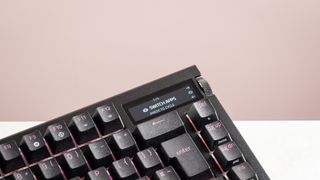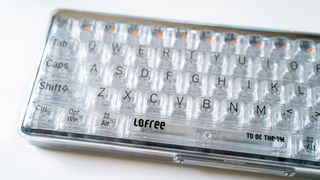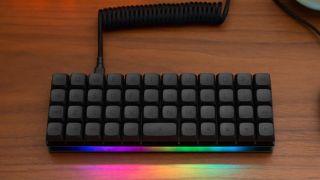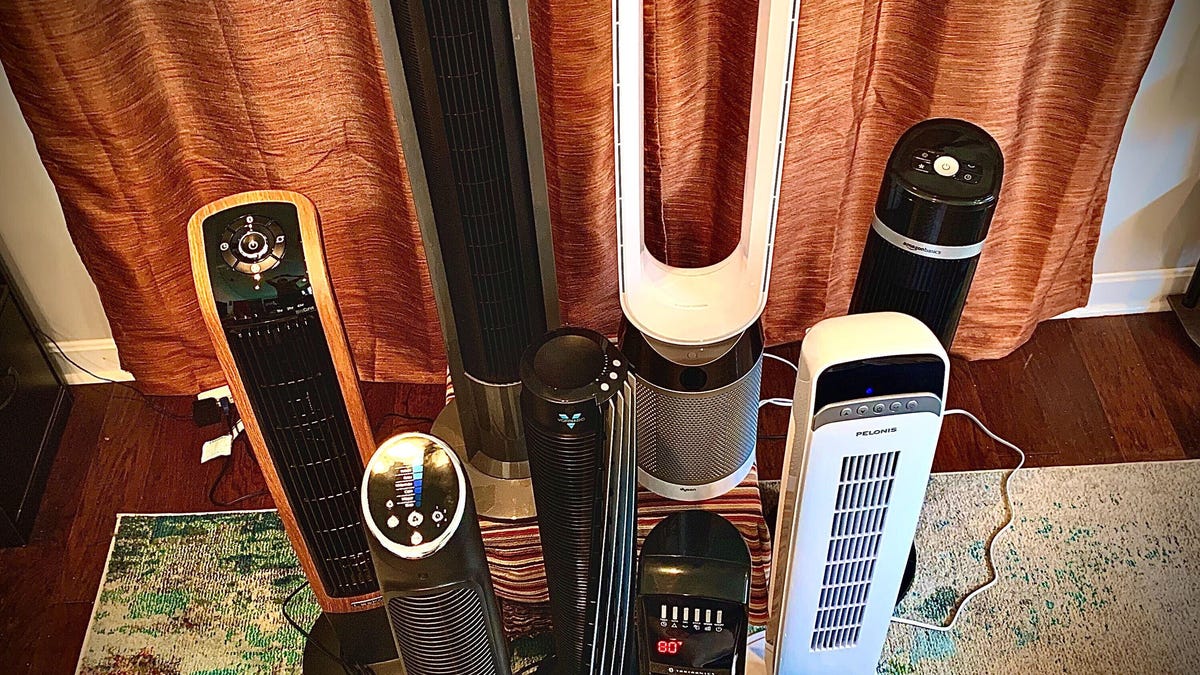I might step on some toes with this one. But I can't stand idly by and watch as my favorite PC peripheral is covered with ugly design choices and marred with fanciful features that add little but dollars to the price tag.
And that's not to say I hate when keyboards try new things - I think it's important to continue innovating and coming out with ideas like the Alice layout, which grew a cult following and cemented itself in the world of switches and keys after its debut in 2018.
However, not all ideas are good ideas. I sincerely hope these keyboards trends don't follow us into 2025.
1. LCD Screens

I have a feeling this one will be particularly divisive, as some of you will swear by your mini keyboard screens. LCD displays aren't exactly new to the world of gaming keyboards. All the way back in 2005 (now 20 years ago, by the way), Logitech came out with the G15 - a full-size keyboard that featured six dedicated macro keys, and more interestingly, a small LCD screen.
While innovative for the time, I think LCD displays on keyboards should've stayed a passing fad. Do they have any useful features? Sure, they can tell you a wireless keyboard's battery life at a glance, or which device you're connected to if your board offers multipoint Bluetooth connectivity. But beyond that and a few other outliers, they largely exist to show off pixelated GIFs. That would be well and fine in my book...if it didn't add considerable cost to the price tag for the novelty.
They're just not worth it in my eyes. If my wireless keyboard is dying, I plug it in. If I'm connected to more than one device at a time, I press Fn+1 and continue typing. Task Manager, and other monitoring software like MSI Afterburner, display the same information you could put on a keyboard's LCD, and they're 100% free to use.
2. Clear keycaps

Clear keycaps can take a classy build with no other problems and turn it into an eyesore in an instant. I don't fall into the camp that thinks RGB looks tacky by default; I prefer to stick to one or two accent colors that look nice with my keycaps, but I have friends that like to go rainbow-crazy with all of their peripherals, and while it's not my style I can appreciate the organized chaos.
That said, I think one way you can make RGB look tacky is to slap transparent keycaps overtop. They hurt everything around them - they make the board's chassis look worse rather than complimenting it, they shove the RGB lighting in your face, and there's no good color for the keys' legends over a clear background.
I think it looks much better to get a set of keycaps that compliment the rest of your setup, or to decorate your board with some custom art that you like.
3. Horizontal volume wheels

I wish all horizontal volume wheels would magically turn into vertical volume knobs overnight. Not only are they an inferior design for their main purpose, controlling volume, but they also usually cut out an extra key bind.
When you have a vertical rotary knob, (as many of the best gaming keyboards do) typically you can push it down, quickly muting all audio on your PC. I use this feature quite often on my Keychron Q1 Pro, and found it missing from boards like the Corsair K100 Air Wireless.
Back to volume control, though, horizontal wheels just don't seem to cover as much ground in a rotation as a vertical knob does, and fine tuning your PC's volume level seems much easier on a tactile knob. Horizontal volume wheels are a lose-lose for me; they're better than no dedicated volume control, but come on, just make it a knob.
4. Plate-mounted stabilizers

Stabilizers are the little pieces that keep your space bar, Shift, Enter, and Backspace keys in proper shape and allow you to hit anywhere on the key to activate it.
When it comes to the two main stabilizer types, plate-mounted stabs are generally a little bit cheaper than screw-in, but also less structurally sound and, speaking of sound, tend to give off an awful rattling noise unless you get under the hood and add custom mods. This isn't an issue with screw-in stabs the vast majority of the time.
Unless we're talking about the most affordable, bottom of the Walmart bargain bin barrel keyboard, I think it should have screw-in stabilizers.
5. The 40% form factor

There's a reason you won't see a 40% keyboard on our list of the best mini keyboards. I just don't see the need for a keyboard like this. In most cases, a TKL or 65% layout will get the job done. Both of these offer enough functionality for everyday tasks without sacrificing portability, whereas the tiny 40% layout does sacrifice significant functionality at the cost of its added portability.
They're nice for saving some desk space, I suppose, but they won't come with number keys, media, or volume controls, and they usually have weird miniature Enter and Shift keys that rub me the wrong way.










 English (US) ·
English (US) ·